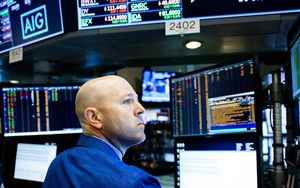(Finance) – TheS&P 500the most followed stock index in the world, is officially entered “bear market” (or bear market), a phase characterized by a progressive decrease in the prices of financial assets and pessimistic expectations. The S&P 500 is down 20% from the record reached on January 3, 2022, a threshold that is generally associated with a bear market. Bear bear markets can be cyclical or long-term, with the former lasting several weeks or a couple of months and the latter lasting several years or even decades. The drop in the S&P 500 has not only caused a bear market, it is also part of one series of seven weeks of reductionsthe longest streak since the dot-com bubble burst in 2001.
The causes of a bear market can vary, but typically they are a weak or slowing or sluggish economy, market bubbles, pandemics, wars, geopolitical crises, drastic paradigm shifts in the economy. The bear market most recent of the S&P 500 was what occurred atbeginning of the pandemic, with the market crashes of early March 2020, when we realized that the coronavirus was becoming a global problem with significant effects on the economy. Previously, the last sustained bear market in the United States occurred between 2007 and 2009, during the financial crisis, and lasted for about 17 months. The S&P 500 lost 50% of its value during that time.
Today’s bear market comes at a time when the United States (and beyond) are coping great inflationary pressures, exacerbated by an increase in energy prices stimulated by the war in Ukraine-Russia. The surge in inflation is driving central banks around the world to aaggressive monetary tighteningwhich could derail the global recovery and lead in recession different countries.
“The shares are still generously priced as well the psychology that drove them up for a decade has turned negative – wrote George Ball, president of investment firm Sanders Morris Harris – The average bear market lasts for a year (338 days, more precisely). This downturn has only lasted for a third of that, so it probably has more downside room to run, albeit punctuated by intermediate upside. “At first, sales focused on growth and tech stocks, but then the sell-off spread to other parts of the market (with very few exceptions, such as the energy sector).
Since 1929, the S&P 500 has entered in a bear market 17 times, including the one that started in these hours, according to data from CFRA Research. The longest period lasted 998 days, from September 1929 to June 1932, while the longest bear market in recent times was 929 days from March 2000 to October 2002. The shortest period, of only 33 days, was l ‘last that occurred: from February 19, 2020 to March 23, 2020. On average, bear markets cause a decline of around 38%, although since 1946 the average loss has been less than 33%. Over the decades they have also become less frequent – there have only been five since 1990.
